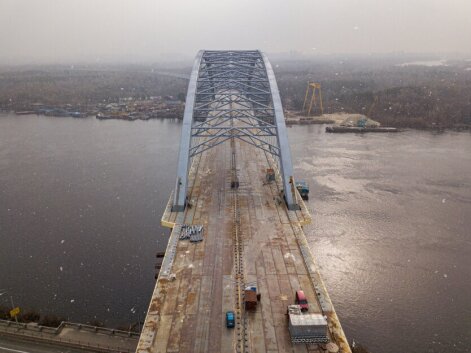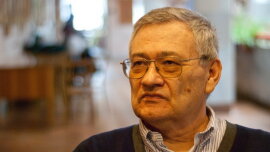In previous parts of our cycle, a range of issues regarding the critical state of our infrastructure have been outlined (see article). In this part we will try to understand why this happens.
The fact is that most of the critical infrastructure is owned by local communities or the state and is serviced by utilities or state-owned enterprises. This is ensured by a direct ban on privatization, or by creating such conditions for conducting this specific "business" that it is constantly at a loss, so private business is simply not interested. In addition to individual industries, which need to be described separately. The utility tariff is regulated and until recently was a result of a "tacit agreement" between the consumer and the government. However, recent utility reforms and the introduction of the gas and electricity markets have violated the "tacit agreement" and balance of interests, which is discussed separately.
Most of the electricity is privately owned by respected businessmen, and regional gas companies are run by private companies no less respected businessmen.
Money in the utility tariff for network upgrades (so-called investment programs) is provided, but in such an amount that does not meet the needs of the industry, and state control over the efficiency and timeliness of modernization and development of these enterprises is almost absent.
Since ownership is obligatory, and the majority of such facilities are owned by communities, the funds for their renovation or modernization should be provided by local budgets. Thus, in fact, it should be expected to spend our money with you as taxpayers, not consumers. Why don't local governments allocate money at all or allocate it in an inadequate amount?
An honest answer to this question will allow you to find the right and adequate solution.
The first reason. Utilities - "bad PR"
As a rule, critical infrastructure facilities are located underground or hidden behind high fences due to safety requirements, in contrast to the same fountains, parks, squares and notorious benches. So what is done or not done with them is seen only by technical inspection or law enforcement agencies. Or the citizens themselves, when for the third time in a year communal services patch a pipe in the same place. The above example of "water against a fountain" is no exception. Local authorities choose more visible objects to demonstrate their concern for residents. And they clearly choose objects not by priority. If we look at the structure of the distribution of allocations of the capital's Program of socio-economic development by areas of use in 2021, we see that more than 9 billion hryvnia goes to transport, and the entire housing and communal infrastructure - only 800 million UAH (less than 10%).
The second reason. "Borscht cooked for 3 years"
Complexity and long terms of projects for modernization of critical infrastructure objects. As a rule, such projects require multi-stage design and high qualification of managers who decide on the need for modernization and are responsible for certain technical solutions. As a rule, in most cases the terms of implementation go beyond the term of political cadence. Here is another example of the capital. Two famous projects: "Four Mayors" - Bortnytsia aeration station (the only treatment facilities of the metropolis) and Podilsko-Voskresensky Bridge ("Mecca" of construction corruption), which began during the time of Mayor O. Omelchenko. The projects are still unfinished and are waiting for their "hero" to be completed.
Therefore, politicians have nothing to brag about to the voters, and the fruits of their beginnings can be passed on to others (as happened in the same Kyiv with the road junctions of the period of the Kyiv City State Administration O. Popov, who within 2-3 years completed what was started 3-5 yeas earlier. It is not known who will get the glory of cutting the ribbons in such projects, so no waste processing plant, pumping stations, storm sewage treatment plants have been built in Kyiv in 10 years.The last metro station was opened in 2013.
The situation is anecdotal. Unfinished projects themselves attract a lot of money for conservation, lose value and relevance, and generally turn earlier investments into lost work. Unfinished facilities are even worse than ones that didn't even start, because there is not enough money, and billions of hryvnias are frozen and do not benefit the whole country.
There is no responsibility for unfinished construction. Decisions on the inclusion (or non-inclusion) in local budgets and programs of socio-economic development of funds for the modernization of critical infrastructure are made by local councils collectively.
Ukrainian cities are probably champions of unfinished projects and even the "facades" of many millionaire cities in Ukraine are turning into cemeteries of ideas and buried budget money (Kyiv Darnytsia Railway Station (started in 2004 ), Lvivska Brama metro station). 1991, billions of hryvnias were buried), the infamous metro to Troyeschina, which in the process of implementation turned into a "light land", then a high-speed tram, then just a tram, and finally - no one needs a ring tour tram route around Troyeschina. And today a lot of money is spent on the above-mentioned Podilsko-Voznesensky bridge, while the city authorities have no idea where that bridge will go, because the next skyscraper is already planned on the site of the intersection with the station on Tatarka.
The second line of the Main Sewerage Collector stood unfinished for 12 years with a 90% readiness stage, until a large-scale accident threatened to flood half of Kyiv with feces.
Everyone who has worked with the budget on capital expenditures in recent years knows that the main expenditures "fall" on the accounts of customers at the end of December. This story is repeated every year. A few years ago, in order not to return the money to the budget, there was a practice of "closing" with the executors of acts of work performed, which are objectively impossible to perform in the last few days of the year. And the next money can be obtained only… in December next year. Therefore, the acts of "work performed" were signed, and on January 5 of the following year, law enforcement officers, who also knew about it came to the "built" facilities.
The transition to multi-year budget planning does not completely solve this problem. Budget contractors cannot be insured that the money will come according to the schedule contained in their contract. More precisely, the implementation of scheduled funding is the exception rather than the norm.
Therefore, almost every facility executed at the expense of the budget is accompanied by a number of criminal proceedings, accounts and property of executing enterprises - possible arrests. The investigation of such cases has been going on for years without understanding the judicial prospects, during which time construction is frozen. Of course, they say that there is no smoke without fire, but compliance with procedural deadlines in criminal proceedings will not be superfluous.
Is there a way out of this impasse - we'll see.

























